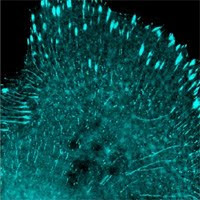Title:
A Novel pro-adipogenesis factor abundant in adipose tissues and over-expressed in obesity acts upstream of PPARg and C/EBPa
Authors:
Yuhui Ni, Chenbo Ji, Bin Wang, Jie Qiu, Jiwu Wang, Xirong Guo
Abstract:
An
important question about adipogenesis is how master adipogenesis
factors (defined as being able to initiate adipogenesis when expressed
alone) peroxisome proliferator-activated receptor (PPAR) initiate
adipogenesis only in differentiating preadipocytes. The objective of our
research was to find previously unidentified factors that are unique or
highly enriched in cells of the adipocyte lineage during adipogenesis
that may provide functional tissue specificity to preadipocytes. We
reasoned that such factors may alter expression profile specifically in
obese individuals. Omental adipose tissues were obtained from obese and
non-obese male patients undergoing emergency abdominal surgery. mRNAs
extracted from either group were used for suppression subtraction
hybridization (SSH). Genes corresponding to mRNAs enriched in obese
versus non-obese patients were identified through sequencing and further
analyzed for tissue distribution. Out of ~20 genes, we found several
that showed clear fat cell specific expression patterns. In this study,
we functionally studied one of these genes, previously designated as
open reading frame C10orf116. Our data demonstrated that C10orf116 is
highly expressed in adipose tissue and is localized primarily within the
nucleus. Over-expression studies in 3T3-L1 cells indicated that it
up-regulates the levels of CCAAT/enhancer binding protein a (C/EBPa) and
PPARg and promotes adipogenic differentiation starting from the early
stage of adipogenesis. Over-expressed in omental tissues from obese
patients, C10orf16 manifested the characteristics of an adipocyte
lineage-specific nuclear factor that can modulate the master
adipogenesis transcription factors early during differentiation. Further
studies of this factor should help reveal tissue-specific events
leading to fat cell development at the transcriptional level.
Link to the original publication: http://link.springer.com/article/10.1007%2Fs10863-012-9492-6Here is Allele Biotech’s webpage showing relevant cell and development biology products: www.allelebiotech.com





